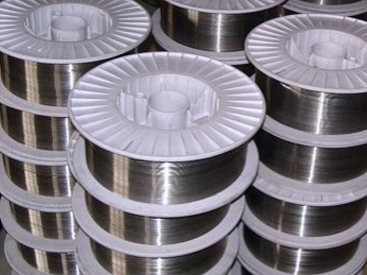This is a question our experts keep getting from time to time. Now, we have got the complete detailed explanation and answer for everyone, who is interested!
There are two types of flux-cored wires — gas shielded and self-shielded. Gas-shielded flux-cored wires require external shielding gas, and the slag is easy to remove. Consider using gas-shielded flux-cored wires when welding on thicker metals or in out-of-position applications.
1. What does the 6 stand for in ER70S-6?
As an example, for a commonly used solid wire — AWS ER70S-6 — the “ER” indicates that the filler metal is an electrode or rod; the “70” signifies that it has a tensile strength of 70,000 pounds per square inch (psi), and the “S” means that it is a solid wire.
2. What is the difference between ER70S2 and ER70S-6?
Both the wires can be used for similar jobs due to their identical capabilities. The major difference between the two products is prominent when the user is operating on contaminated or rusted surfaces, in which case the ER70S6 provides better penetration and higher quality of welds.
.jpg)
3. Is flux core wire good?
The LINCOLN ELECTRIC NR-211 flux-core wire is a good quality reel that, when welding, cools quickly to keep heat out of your project. It also produces very minimally spatter. The slag has good coverage but is easily removed, making cleanup a breeze. Unfortunately, the range is very small.
4. Does flux core wire go bad?
Flux core wire is not solid, so contaminants such as moisture can enter the wire. So, if flux core wires are exposed to moisture for a long time, they will go bad. ... While flux core wire can go bad, it does not merely go bad for no reason or without any signs.
5. Can you use flux-cored wire with gas?
You can use gas with a regular flux core, but it is a total waste of gas. The flux in dual shield wire doesn't shield the weld, it causes better deposition rates and weld characteristics in the weld. Gas is needed with a dual shield to shield the weld, but not with flux cored.
6. What's the difference between .30 and .35 flux wire?
A flux core wire that features a 035 electrode implies that it is thicker than one, which measures 035 by. 005 inches. ... The thicker the diameter of a wire, the deeper the penetration. While 035 flux core wires work well with 250 V machines, 030 flux-cored wires deliver great performance when used with 210 V machines.

Flux Cored Wire Gas-shielded
7. How do I choose flux core wire?
030-inch diameter is a good all-around choice for welding a wide range of metal thicknesses. For welding thicker material at higher total heat levels, use. 035-inch wire (or . 045-inch wire if it's within your welder's output range).
8. What is the most preferred MIG wire solid or flux core?
The first reason why you may prefer gas-shielded solid core wire for MIG welding is the most obvious: You don't have to clean up the flux when you're done welding. The shielding gas saves you a clean-up step and helps you immediately create a clean weld.
9. How can you tell the difference between flux core and solid wire?
Solid wire provides deep penetration in the root and usually has little spatter. Flux-cored wire has a larger ball-type transfer and produces low spatter levels. In addition, flux-cored wire produces a rounder penetration profile with excellent sidewall fusion.
10. Can I use solid wire without gas?
While solid MIG wire requires a shielding gas to protect the weld, typically a mix of Argon and CO2, there's also flux-cored MIG wire that shields the weld on its own without the help of gas.
11. How long can you store flux core wire?
Flux cored wire should not be stored for more than 5 years. The older wire should be redried before use. Storeroom temperature should be kept as even as possible, temperature variations should not exceed ± 5°C.




.jpg)




